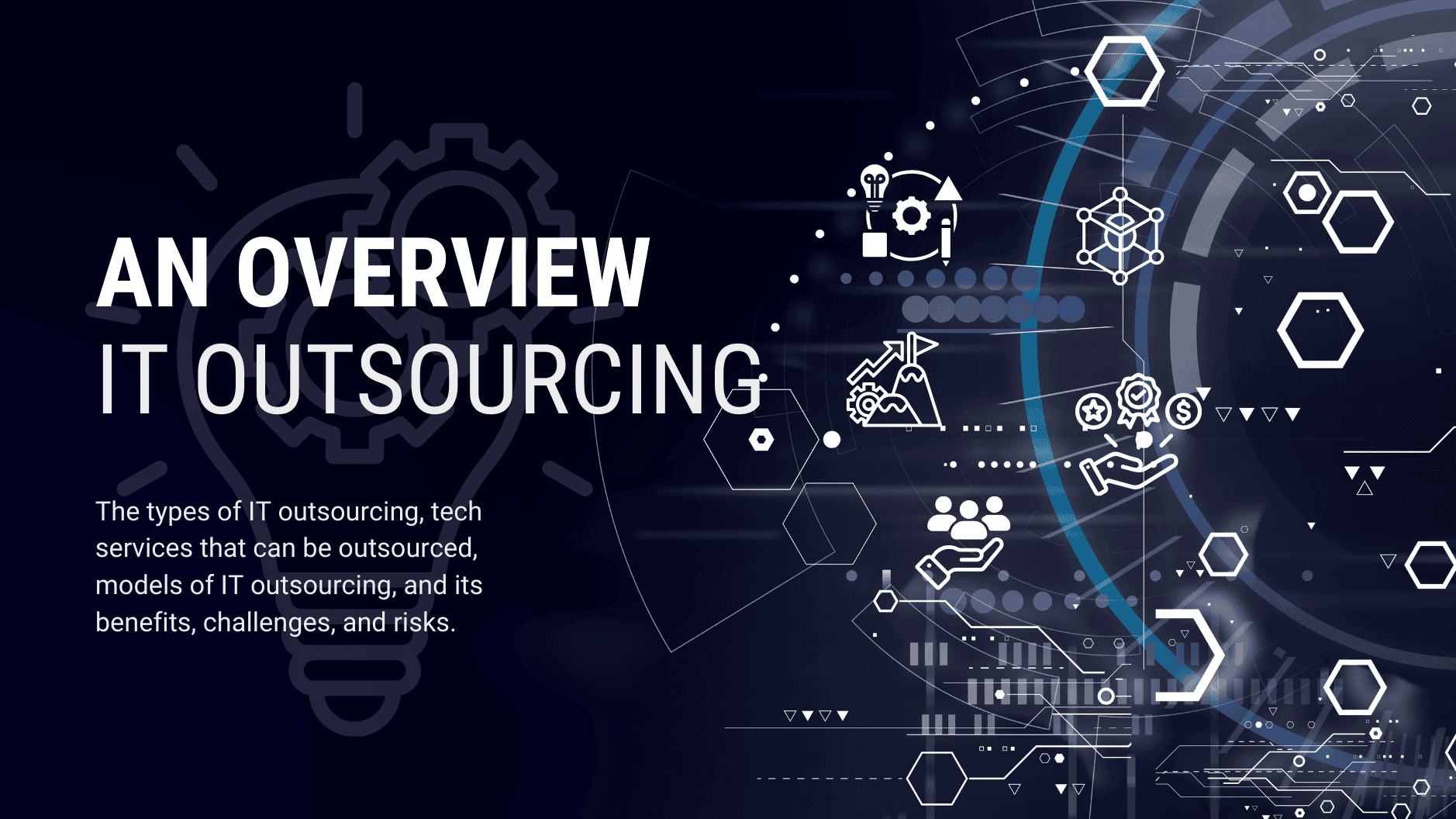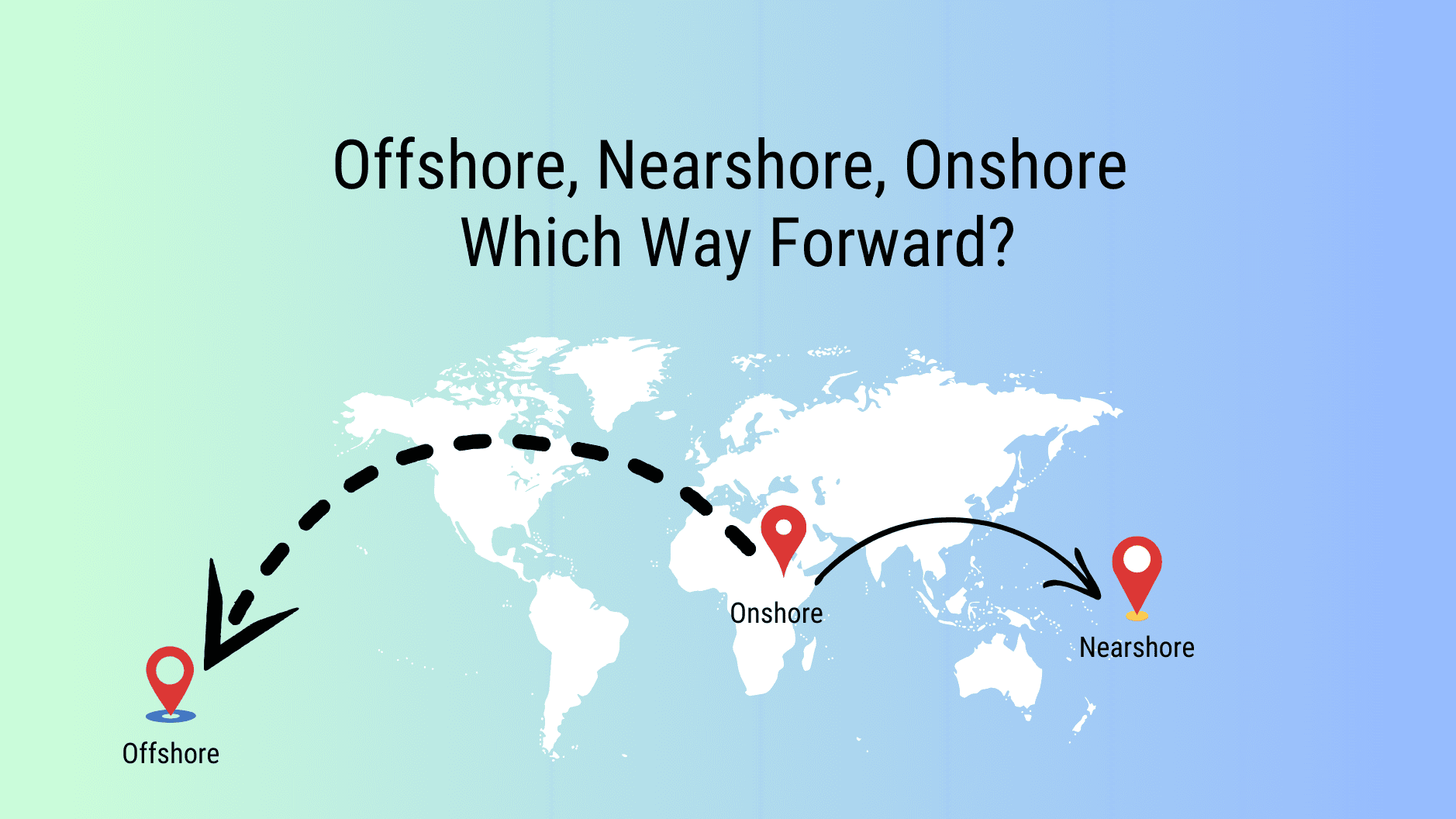
In today's IT outsourcing landscape, businesses are tapping into diverse talent and advanced technologies to optimize costs and drive digital transformation. Cybersecurity measures and data privacy regulations have gained critical importance with the pandemic accelerating remote work. As specialized outsourcing models gain ground, the industry is primed for further evolution, prioritizing automation, IoT integration, and sustainable, ethical practices.
Let’s discover an overview of IT Outsourcing. Understanding the intricacies of IT outsourcing involves exploring its components, such as the types of IT outsourcing, tech services that can be outsourced, models of IT outsourcing.
IT outsourcing is the practice of entrusting specific IT software development projects or IT-related tasks to external service providers, enabling businesses to access specialized skills and technologies while focusing on their core operations. This strategy often results in cost savings, increased efficiency, and enhanced flexibility for businesses, allowing them to adapt more quickly to technological advancements and market changes.

Your business can consider 3 approaches to IT outsourcing, based on the location and nature of the outsourcing arrangement:
Each type of IT outsourcing presents distinct benefits and challenges, allowing businesses to select the most suitable option based on their specific needs and priorities.
Following these IT outsourcing models, businesses can explore a diverse range of technology services that can be effectively outsourced to external service providers. These services include software development, application management, cloud computing services, cybersecurity services, IT infrastructure management, and data analytics.
By leveraging these outsourced services, businesses can enhance their operational efficiency and focus on core competencies while benefiting from specialized expertise and advanced technological solutions.
IT services make up 72% of all global outsourcing contract values (ISG). Details, Of the $92.5 billion in contracts generated by global outsourcing firms, $66.5 billion came from information technology (IT) services. Business process outsourcing made up the remaining $26 billion in total contract values.
By understanding the scope of IT outsourcing services, your business can further explore different models of outsourcing that best suit your operational requirements and strategic objectives.
We have 2 kinds of IT outsourcing: Collaboration models and price models
In this model, businesses supplement their existing teams with external resources to fulfill specific skill or resource gaps. This model allows organizations to scale their workforce up or down based on project demands without the long-term commitment of hiring full-time employees. External resources, such as developers, designers, or IT specialists, seamlessly integrate with the in-house team, leveraging their expertise to meet project requirements.
This model is particularly beneficial for short-term projects requiring specialized skills or for handling peak workloads. It provides a cost-effective solution for obtaining additional talent without the overhead costs associated with full-time employment. The client organization typically takes on the responsibility of managing the augmented staff. The client's internal team or project managers oversee and coordinate the work of both in-house and augmented staff. They are in direct control of task assignments, project timelines, and overall project management
This model involves the establishment of a dedicated team of professionals who work exclusively on the client's project, offering more control and flexibility. The Dedicated Development Team model involves the creation of a specialized and exclusive team of professionals dedicated solely to a client's project. This team operates as an extension of the client's in-house staff, working closely with the client team.
It is particularly suitable for long-term and complex projects where continuous collaboration and adaptability are essential. The client benefits from having a team fully immersed in the project, fostering a deeper understanding of objectives and ensuring a high level of commitment. Both the client and the external team share responsibilities in managing the project. The client retains significant control over key aspects such as team composition, project management, and overall strategy. The client's project managers or team leaders oversee day-to-day activities, while the external team actively supports project management tasks, providing valuable insights and expertise. This model offers a high degree of flexibility, allowing for easy adjustments to the team's size or composition as project needs evolve.
Businesses outsource entire projects to external teams, allowing for cost-effective and timely completion of specific tasks or initiatives. Project-Based Outsourcing is a model where businesses entrust entire projects or specific tasks to external teams. This approach is ideal for organizations looking to capitalize on external expertise for projects with well-defined scopes and deliverables.
By outsourcing projects, businesses can leverage the specialized skills of external teams, often leading to cost savings and quicker project completion. It offers a strategic and efficient way to handle projects without the need for a long-term commitment to external resources, making it a valuable option for achieving specific goals within a predetermined timeline and budget.
Project-based outsourcing often involves a shared management approach. Project managers from both the client and the outsourcing partner collaborate to define project requirements, milestones, and deliverables. The client maintains strategic control over scope and budget, while the outsourcing provider focuses on development and operational management, ensuring that the project is executed efficiently and meets the specified criteria. This model encourages effective communication and collaboration between both parties throughout the project lifecycle.
So, analyzing these models enables your business to align its outsourcing strategies with your specific project requirements, budget constraints, and long-term goals, ensuring optimal collaboration and cost efficiency.

In conclusion, the landscape of IT outsourcing offers businesses unparalleled opportunities for growth, efficiency, and innovation. As demonstrated by successful case studies and considerations when choosing an outsourcing partner, the strategic implementation of IT outsourcing can overcome challenges and yield numerous benefits.
BlueOC stands ready as a reliable partner, equipped with standardized development processes, flexible project approaches, and teams proficient in English and Japanese. Contact BlueOC today, and let us help you consult and prepare for effective IT outsourcing, ensuring you're well-equipped to achieve your business goals.


